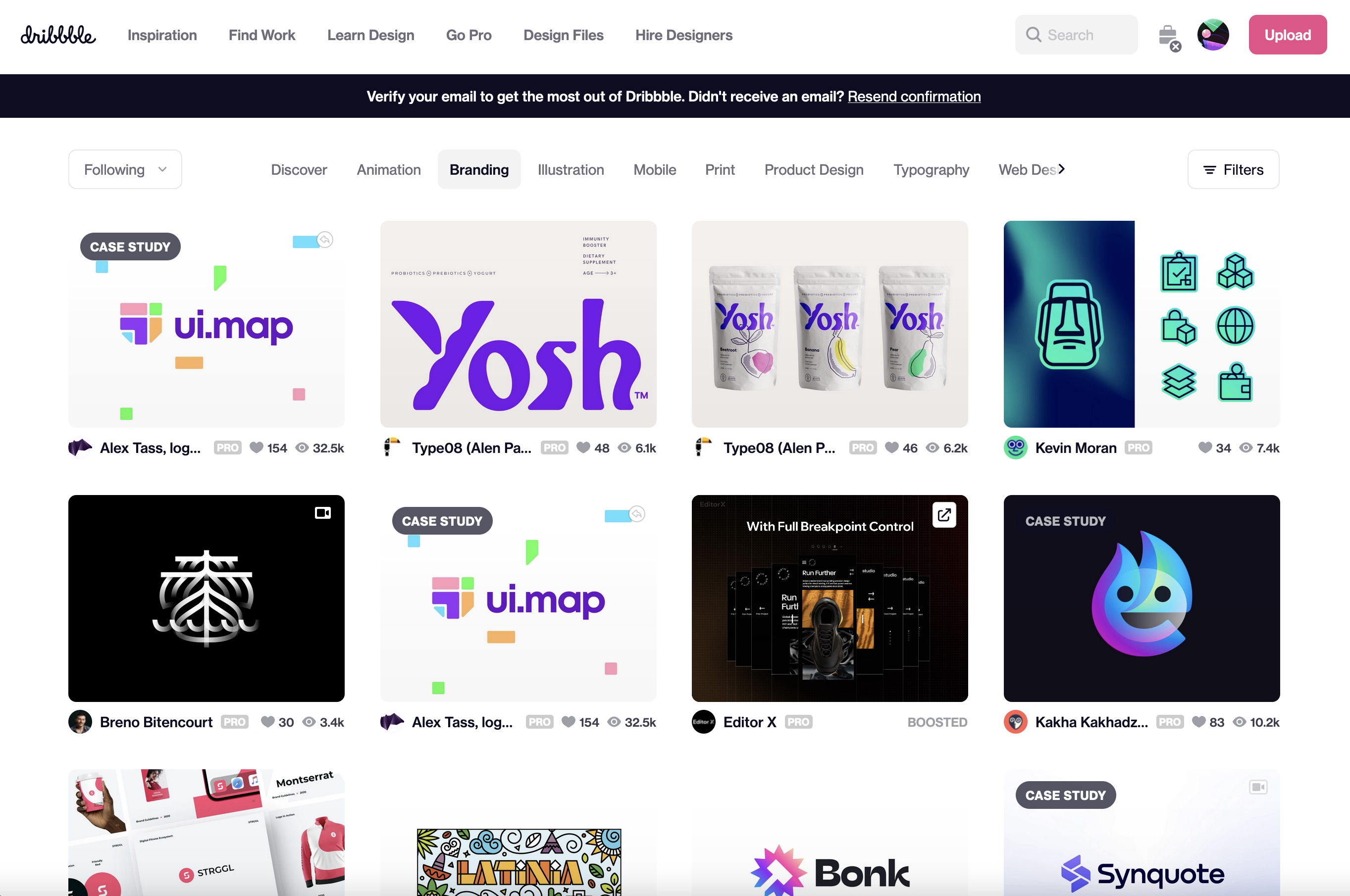Welcome to topic 5 – Research Work Opportunities. The purpose of this topic allows you to develop your awareness of career prospects in the graphic design industry. Employing research techniques in identifying sources of information, and determining future networks culminate in contextualizing your own work and your chosen vocation.
You will be introduced to the following topics:
- Identify sources of information and work opportunities
- Networks and promotional opportunities for designers
- Research results and career planning
Work Opportunities
Opportunities to develop professionally are valuable for career advancement in the field of graphic design. Learn to identify these opportunities when you come across them and you will be furthering your education and marketability by making the most of them.
You can find these sources through:
- Conferences
- Seminars/webinars
- Internships
- Following blogs and respected design portfolio platforms
- Student resources
- Professional accreditation
- Tools and software
Conferences

Many industries have one or more notable conferences annually in Australia, and graphic design is no exception.
Conferences are large gatherings of professionals invested in a particular industry, meeting one, two or more days for educational and networking purposes. Generally the days will be split into shorter 1-2 hour segments for different activities, followed by a dinner, drinks or networking event. Usually there will be multiple interesting and influential guest speakers, that are specialists in their area and have had notable success in their careers and are in the position to share their wisdom. It is worth taking notes during these sessions as you’re likely to take away valuable information.
Sometimes at conferences you may also break away into smaller groups to complete practical activities or tasks together, such as working in a team to design a product using a new technology, program or methodology. These are great opportunities to learn new hands-on skills, practise your craft and meet others in your field.
If you get the chance to, it is worth attending Australia’s most renowned design conferences such as The Design Conference or more specific themes such as Typography conferences, UX design, interior design or wherever your further passions lie.
Seminars/Webinars
Seminars are usually on a smaller scale than conferences, maybe around 100 people and are usually much shorter in duration as well, perhaps 1-2 hours. Due to this smaller nature it is common to have them offered as ‘Webinars’; hosted virtually through tools such as Zoom, MS Teams or Google Hangouts. There is also little to no emphasis on networking at seminars; they are usually solely focused on education.
Seminars and webinars can be an inexpensive, easy way of learning new skills or methodologies fast.
Internships
Internships can be a resourceful stepping stone into your dream career. Some larger organisations have internship programmes, with smaller companies taking interns less frequently. Many internships nowadays are paid, although you may sometime come across unpaid internships. While unpaid sounds very unappealing, it may be worth still looking into. Ask questions - maybe it will be unpaid for 3 months, and then you will be taken on permanently in a well-paying role straight afterwards as long as you are performing up to standard. Or maybe it is unpaid but the particular company is very prestigious and difficult to get a foot in the door at (looks great on your CV), or may come with fantastic mentors and learning opportunities. Ultimately it is up to you to decide whether those opportunities are worth it to you.
Following blogs and respected design portfolio platforms

Platforms like Dribble and Behance are great for following updates in the design world. They provide a window into other designer’s works. Taking a look through these when you’re stuck in a creative rut can help you find your inspiration.
Blogs by designers can also be useful in helping you to interpret some of the themes and ideas you may come across in the design world. Hearing other experienced designer’s opinions can teach you new ways to create designs, or to analyse problems.
InDesignSkills is another great site for:
Professional accreditations and memberships

Completing certificates or other qualifications within the field of design can add further weight to your CV, increase your confidence and enable to be exposed to contacts that can help you further your career.
Having a professional membership to an organisation such as AIGA is incredibly advantageous. AIGA is the Professional Association for Design, based in the USA but reaching all over the world. It can provide opportunities such as entering design competitions, conferences, webinars, events, scholarships and certificates for creatives such as yourself. You can also find many helpful student resources on the AIGA site.
Tools and software
Ensure that you keep the software you use up to date. The Adobe creative cloud includes software such as Photoshop, Illustrator and InDesign; common programs you will likely use to create your products. By using these tools regularly you will keep your skills up and the programs will remain up-to-date and able to perform at their (and your) best.
Identify networking opportunities
‘Networking’ is really just meeting others and socialising in a professional setting. Great networking skills go a long way in the world of graphic design, especially if you are working for yourself. You will come across chances to network in your career both as organised events, but also as organic chance meetings.
Ultimately, networking enables you to meet other likeminded people, share industry tips and insights, discuss interesting topics and learn from each other, and find job opportunities. But how can you maximise your chances to ‘network'?
LinkedIn can be a great place to start with networking. The social networking site is geared specifically towards professionals and can allow you to meet people, market yourself, search for jobs, further your industry knowledge, keep up with trends and join events. You can build your CV on your profile page so that potential employers can see your skills and experience.
Industry events
By attending events in your industry such as conferences or other networking events you can meet others in your field and expand your contacts in the business. Networking is as simple as just making casual conversation with people and finding out more about what they do. In an hour of networking you’re bound to find a couple of people that you find interesting or really click with on a professional level.
Online communities and message boards
You can join online design communities such as those listed here. Online communities can help you connect with others in a virtual setting and share knowledge and advice.
Elevator pitch

At work, conferences or other networking settings, you will be asked what you do. It helps to be prepared with a succinct but informative answer. An elevator pitch is a 30-ish second summary of your professional self and what you do – around the same amount of time it takes to ride an elevator with someone.
- Introduction: “Hi I’m [name], a [position title] at [company name]. It’s great to meet you!”
- Problem: “Since you work with [company name or industry] I figured you’d be interested to know that [problem + interesting statistic].”
- Solution: “The great part about working at [your company’s name] is that we’ve been able to fix just that problem by [solution].”
- Value proposition: “In fact, we’re the only company that offers [value proposition].”
- CTA: “I think our solution could really help you. Are you available this week to speak further on this?”39
Here are a couple of other examples of elevator pitches:
“The problem is that work is chaotic no matter what industry you’re in or how good you are at your job. But a good project management software can help improve productivity and communication. I haven’t missed a deadline in years. If you’re interested in how it can help your team, give me a call and I can take you through some numbers.”
“Great to meet you, I’m Kelly with Apollo Enterprises. We’ve been able to improve productivity and collaboration for teams all over the world. If you ever need help with project management, just reach out. I think we could make a huge impact on your company. I’ll make sure to keep your contact information handy as well.”
“Over one-quarter (26%) of all deadlines are missed each week because of a lack of clarity. But with the right project management tools, that number could be much lower. So the question is, can your business afford not to use project management software?”
And a graphic design elevator pitch is below:
Have a go now at writing your own elevator pitch! Use some of the tips below to guide you and then practise it on someone you know.
- Show your human side; try to relate to the audience and be friendly
- Highlight your unique selling point
- Throw light on a problem and offer a solution
- End with a memorable call to action40
Furthering your knowledge and gaining a professional network are vital steps to flourishing as a graphic designer, but how can you apply the benefits of these to your work and career?
Learning new skills
Picking up new skills through seminars, conferences, research, and other professional development opportunities is a great way to further your career - if you can apply what you have learnt to your practice.
Make notes – then plan
Make notes of the point that have really hit home for you and taught you something new. Then go over your notes later, type them up into a table and beside each one, make a plan for how you could start benefitting from each point you have noted.
For example:
| Notes | Plan |
|---|---|
|
Find a mentor |
Ask someone you know and respect in graphic design if they’d mind meeting once a month to provide mentoring and coaching. |
|
Enter graphic design competitions for experience |
Do some research to find some local graphic design competitions. Look through past entries and winners and create something that can be reused in your portfolio |
Create libraries
When you learn new skills, techniques, or find particular styles you love and feel inspired by, document them and store them in a ‘catalogue’ on your device or storage cloud. Arrange them by type of feature, then by style. These will be invaluable when you are searching for ideas in your projects later on,
Practice
When you learn something new that could help you to develop your creative voice, try not to leave it unused and neglected. Even if you don’t have project that needs it right away, go away and have a practice by yourself. By using this new skill a few times it will help encode it to your long term memory so that it’s ready for when you really do need it.
In the workplace
Even if you don’t have a current project to use your newfound skills and knowledge; take the opportunity to present a short presentation of what you have learnt to your colleagues. Add any significant events, courses or useful skills learnt to your CV as well.
Roles in the Design Industry

Freelancers and design contractors
A freelancer or design contractor works for themselves. This role is self-managing and is responsible for every aspect of running their own business.
Freelancers need to build business relationships to bring in new clients and maintain their current ones. They need to do their own administrative, financial, marketing, legal and other general business-related duties. It is possible to outsource these duties to other companies or utilise web applications to assist with completing some of the tasks, at an additional cost.
Inhouse designers
An inhouse designer is a designer who works within the design or marketing department of a company. This person might be the only designer in the company, or they may work in a team with other designers.
Their work is to support the company’s effort in every aspect of the business. It can involve producing training materials, creating an Annual General Report (AGR), producing content for marketing materials, and other design tasks. This role can report to the owner or manager directly, or if it is within a design team, they can report to a design lead.
Working for an agency
Graduates are likely to start as a junior designer with a creative or design agency. Junior designers will report to senior designers and follow directions from creative and art directors.
They work alongside account managers, copywriters, and if the company has a multimedia department, UX designers, web developers, and video content creators, to name a few. The range of work varies depending on the type of clients the agency has.

